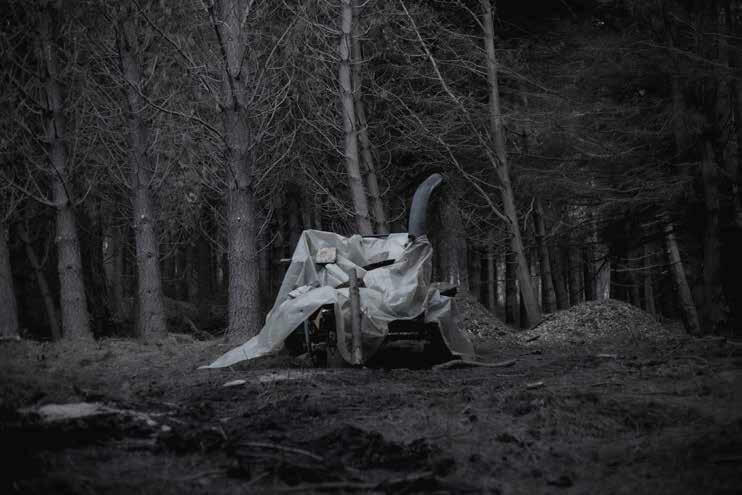VUTAMUSEO 2025: MEMORY AND TERRITORY ON HERITAGE DAY
MAM Chiloé opens the sixteenth edition of Vutamuseo, a cycle of exhibitions that celebrates the diversity of artistic perspectives through five proposals that intertwine color exploration, pedagogy, photography, and reflections on memory and environment.

The exhibition Forensic Choreographies by Teresa Larraguibel Ugarte invites viewers on an introspective journey through art, presenting artistic practice as a tool to explore identity and the often-unknown origins of the self. In contrast, O Canta o Nada, by artist Félix Lazo, marks his return to painting with an explosion of color. Inspired by music, the work positions itself as a manifesto: either it sings, or it is nothing.
From a poetic and pedagogical perspective, Teresa Montero presents The Body of the Soul, an installation made up of thousands of unique pieces of rice paper, hand-dyed with Chinese ink and individually cut. The work evokes the infinite forms of nature and the various ways cultures have represented them.
Verónica Ibañez Romagnoli, in turn, presents Light, Space, Memories, the result of over a decade of research into the relationship between light and our perception of space. The artist proposes a sensory experience that invites viewers to reconsider how we inhabit and remember the environments around us.
Vutamuseo 2025 also pays tribute to photographic heritage with a selection from Nada queda atrás (Nothing Left Behind), a book featuring images by American photographer Milton Rogovin, who portrayed life in Chiloé during the 1960s at the invitation of Pablo Neruda. The photographs are accompanied by texts from Carlos Trujillo, a Chilote poet and scholar who met Rogovin decades later in Philadelphia. This exhibition highlights the value of MAM Chiloé’s permanent collection and the shared memory of the archipelago.
As part of Chile’s Heritage Day, Vutamuseo 2025 stands out as a platform for contemporary artistic thought in the south of the country, deeply engaged with the exploration of territory, memory, and identity. This edition is part of the museum’s Management Plan and is funded by the Ministry of Cultures, Arts, and Heritage through the Program for Supporting Collaborative Organizations (PAOCC).




